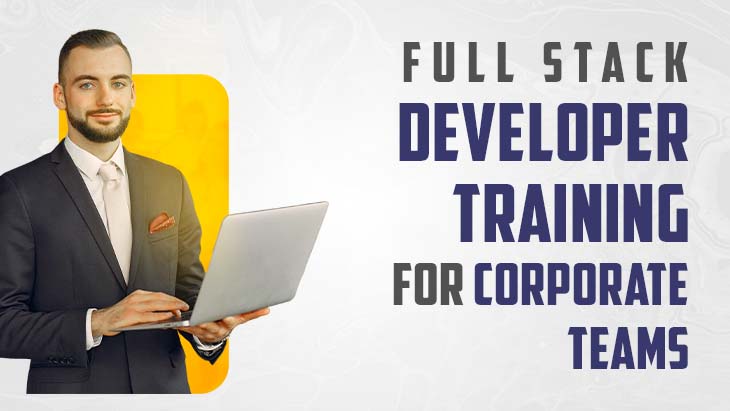In the realm of web development, the back end is the backbone of the entire operation. It's where the server, database, and application logic come together to create the functionality that users interact with. Choosing the right back-end programming language is crucial for building robust, scalable, and efficient web applications. In this comprehensive guide, we'll explore the top back-end programming languages that empower developers to create powerful web solutions.
Understanding Back-End Development
Before we delve into the top back-end programming languages, let's first establish a clear understanding of what back-end development is and why it's essential.
1. What is Back-End Development?
Back-end development refers to the server-side of web development, where the focus is on creating and managing the server, database, and application logic. Back-end developers work on the hidden aspects of a web application, ensuring that data is processed, stored, and delivered seamlessly to the front-end, where users interact with the application.
2. The Role of Back-End Programming Languages
Back-end programming languages are the tools used by developers to build the server-side logic of web applications. These languages enable data processing, user authentication, database interactions, and more. The choice of a back-end language significantly impacts a project's performance, scalability, and maintainability.
Criteria for Evaluating Back-End Programming Languages
Before we dive into the list of top back-end languages, it's crucial to understand the key criteria for evaluating them. Here are some important factors to consider:
1. Performance
Performance is a critical aspect of any web application. The language's execution speed, memory usage, and ability to handle concurrent requests play a vital role in determining performance.
2. Scalability
Scalability is the capability to handle increased workloads efficiently. A language's scalability is influenced by its architecture and the tools available for managing resources.
3. Community and Ecosystem
A thriving community and ecosystem provide access to libraries, frameworks, and third-party tools that can simplify development and problem-solving.
4. Security
Security is paramount in web development. A back-end language should have robust security features and be resistant to common vulnerabilities.
5. Learning Curve
The ease of learning a language can impact development timelines. A language with a steeper learning curve may require more time for developers to become proficient.
Top Back-End Programming Languages
Now, let's explore the top back-end programming languages that are widely used in web development.
1. Python
Overview:
Python is renowned for its simplicity and readability, making it an excellent choice for both beginners and experienced developers. It offers a wide range of frameworks such as Django and Flask for building web applications.
Strengths:
* Clean and easy-to-understand syntax.
* Abundant libraries and frameworks.
* Strong community support.
* Excellent for data science and machine learning applications.
Use Cases:
Python is suitable for various web applications, including content management systems, e-commerce platforms, and scientific computing.
2. JavaScript (Node.js)
Overview:
Node.js is a server-side JavaScript runtime that has gained significant popularity in recent years. It allows developers to use JavaScript for both front-end and back-end development, ensuring code consistency.
Strengths:
* Non-blocking, event-driven architecture for high concurrency.
* Huge ecosystem of packages and modules via npm (Node Package Manager).
* Real-time applications and microservices development.
Use Cases:
Node.js is ideal for building real-time applications like chat applications, streaming services, and serverless functions.
3. Ruby
Overview:
Ruby is known for its elegant and readable syntax. The Ruby on Rails framework, often referred to as Rails, is a powerful tool that simplifies web application development.
Strengths:
* Developer-friendly and highly productive.
* Convention over configuration approach.
* Strong focus on testing and automated tasks.
Use Cases:
Ruby on Rails is commonly used for building web applications, social networks, and content management systems.
4. PHP
Overview:
PHP is one of the most widely used back-end languages, powering a significant portion of the web. It's known for its server-side scripting capabilities and extensive web development frameworks.
Strengths:
* Mature and well-documented.
* Large developer community.
* Excellent support for databases, especially MySQL.
Use Cases:
PHP is suitable for a wide range of web applications, from small personal websites to large e-commerce platforms.
5. Java
Overview:
Java is a versatile, object-oriented language that has been a staple in enterprise-level back-end development for years. The Java Virtual Machine (JVM) allows it to run on various platforms.
Strengths:
* Strong typing and strict error checking.
* Excellent performance and scalability.
* Extensive libraries and frameworks like Spring and Hibernate.
Use Cases:
Java is commonly used for building large-scale enterprise applications, financial systems, and e-commerce platforms.
6. C#
Overview:
C# is a language developed by Microsoft, primarily used for building Windows applications. With the advent of .NET Core (now .NET 5+), C# has become cross-platform and suitable for web development.
Strengths:
* Strongly typed and easy to integrate with other Microsoft technologies.
* Excellent tooling support with Visual Studio.
* Suitable for building Windows applications and web APIs.
Use Cases:
C# is a great choice for building Windows applications, web APIs, and cross-platform web applications using .NET Core.
7. Go (Golang)
Overview:
Go, often referred to as Golang, is a statically typed language created by Google. It's designed for efficiency and scalability, making it an excellent choice for building high-performance applications.
Strengths:
* Efficient and lightweight, ideal for microservices and serverless applications.
* Strong support for concurrent programming.
* Fast compilation times.
Use Cases:
Go is well-suited for building scalable web services, APIs, and applications that require high concurrency.
8. Rust
Overview:
Rust is a systems programming language known for its emphasis on safety and performance. While not as common in web development, it offers unique advantages.
Strengths:
* Memory safety and zero-cost abstractions.
* Excellent for building high-performance, secure applications.
* Strong type system prevents common programming errors.
Use Cases:
Rust is ideal for building web applications where security and performance are critical, such as browser engines and networking tools.
Choosing the Right Back-End Language
The choice of a back-end programming language depends on various factors, including the project's requirements, team expertise, and scalability needs. Here are some guidelines for making the right decision:
1. Project Requirements
Consider the specific requirements of your project. Different languages and frameworks are better suited for certain types of applications. For example, if you're building a real-time chat application, Node.js might be a strong choice due to its event-driven architecture.
2. Team Expertise
Evaluate your development team's expertise. Choosing a language that your team is familiar with can lead to faster development and better code quality. Additionally, consider the availability of skilled developers in the job market.
3. Scalability
If you anticipate significant growth, prioritize languages that offer good scalability options. Node.js, Java, and Go, for example, are known for their ability to handle high levels of concurrency.
4. Ecosystem and Libraries
Consider the availability of libraries, frameworks, and tools for the language you choose. A rich ecosystem can significantly speed up development.
5. Community and Support
A strong developer community and good documentation are invaluable resources. They can provide solutions to problems, offer best practices, and help with troubleshooting.
Conclusion
Selecting the right back-end programming language is a critical decision that can impact the success of your web development project. Each language has its strengths and weaknesses, making it essential to align your choice with your project's goals, team expertise, and scalability requirements. Whether you opt for the simplicity of Python, the versatility of JavaScript (Node.js), the productivity of Ruby, or any other language on the list, remember that the success of your project ultimately depends on how well you leverage your chosen tools and technologies.





Leave a reply